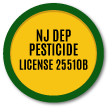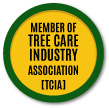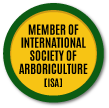 Timber Stand Improvement (TSI) in Stewartsville, NJ
Timber Stand Improvement (TSI) in Stewartsville, NJ
Timber Stand Improvement (TSI) denotes management practices that improve the vigor, productivity and quality of stands of trees.
Many options are open to woodland owners. They may use a TSI program to increase the woodland’s value for timber products, water, recreation, forage, wildlife, natural beauty, or for special products. Fortunately, work done to improve one use also benefits others in most cases.
Various practices used and tree species selected should fit the chosen emphasis for the woodland. The number of trees to keep depends on species, type of site, management goals and size of the trees. Professional foresters are available to help determine a woodland’s potentials and limitations and to help develop and carry out a suitable management plan.
Types of trees usually removed are:
- Trees inferior because of their species.
- Trees interfering with growth and development of selected desirable trees.
- Damaged Trees (broken off, bent over, fire scarred, seriously barked, etc, but expected to live at least one cutting cycle.)
- Seriously diseased trees or trees serving as breeding ground for undesirable insects.
Thinning is cutting trees from an immature stand to increase rate of growth and improve the form of the remaining trees. Proper space varies depending on species, purpose of management and quality of the location (site). Table 1 gives a range of spacing for trees of various diameters.
Pruning is removing limbs to produce the maximum clear lumber or veneer in the butt log. Prune only selected hardwood trees where high-value species are grown on good sites. This is recommended primarily in managing black walnut. Questions about the benefits of trees or why topping your trees is a bad idea? Contact us at Sunshine Tree & Landscape in Stewartsville, NJ.
In pruning lower limbs of young trees, don’t remove too much of the food-producing leaf surface of the tree. At least one-half of the living crown of the tree should be left intact. In general, trees should be pruned before they reach 8 inches in diameter. Limbs to be removed should be pruned before they reach 2 inches in diameter to reduce the wound size, to ensure proper closing and to lessen the impact of entry by insects or disease organisms
Vine Removal
On some areas vines do considerable damage to trees. Vines not retained because of wildlife food value, fall color, etc., should be killed at the same time other stand improvement work is done. Remove them by cutting them as low to the ground as possible and immediately treating the stump with a herbicide.
Benefits:
- By improving the productivity of the woodlands, the landowner will see higher economic return from the woods.
- Timber Stand Improvement will enhance wildlife habitat through creation of snags, edge, escape, and nesting cover.
- TSI will have a positive effect on water quality in an area of the state with numerous important watersheds.
- TSI will provide a supply of quality limber in the future at an affordable price. *TSI will produce long lasting sustainable benefits.





